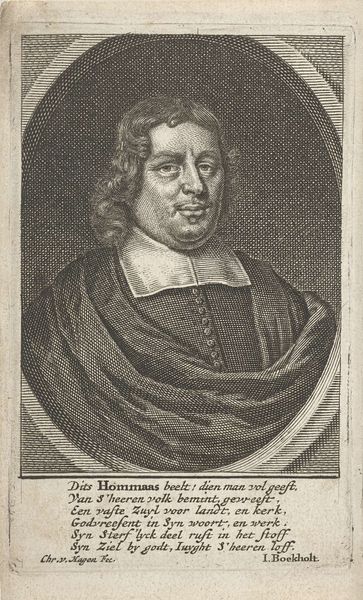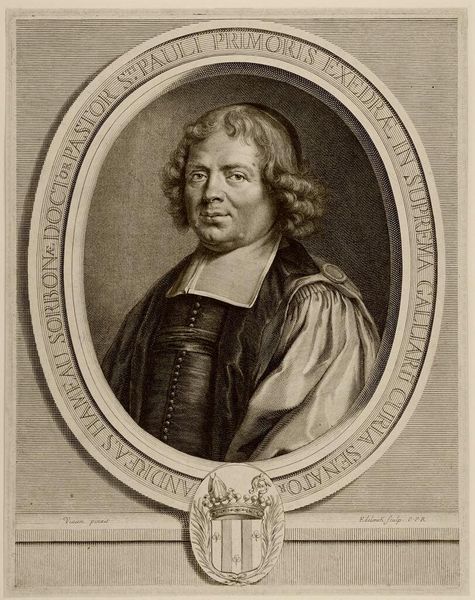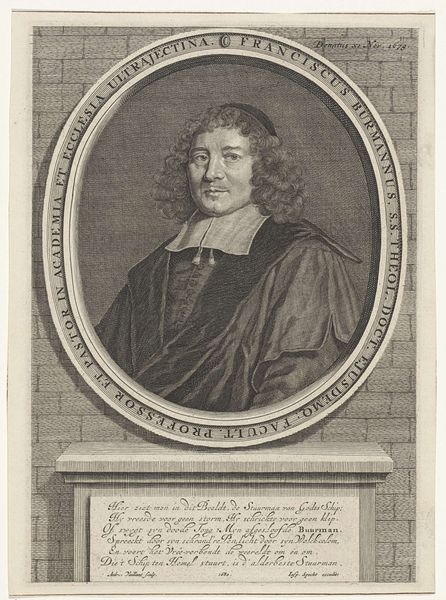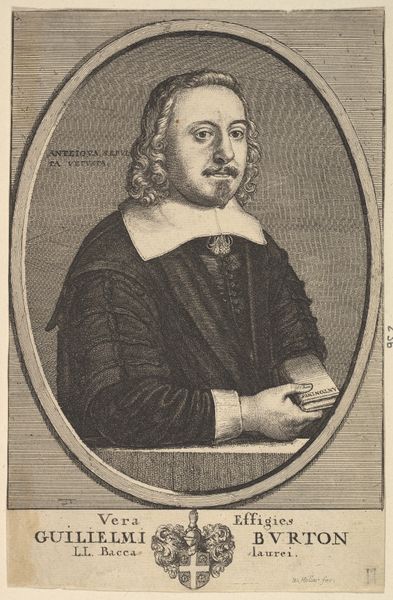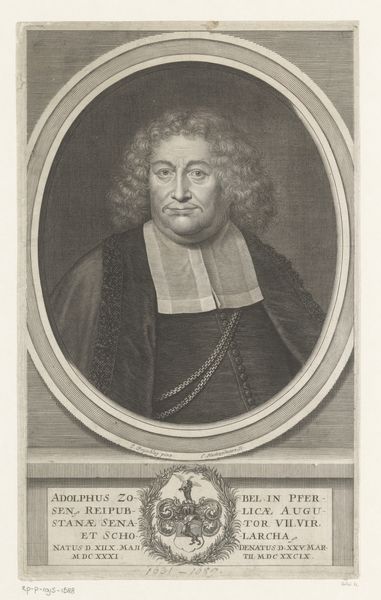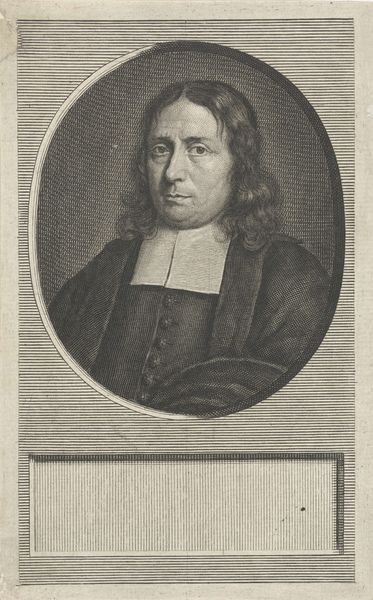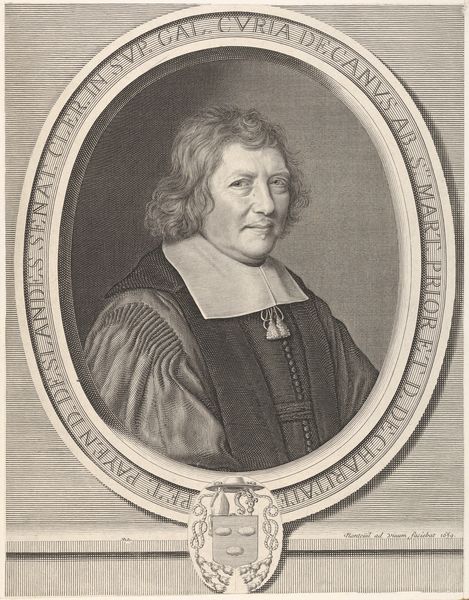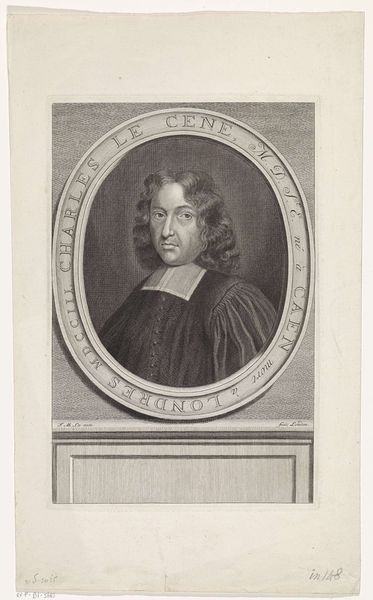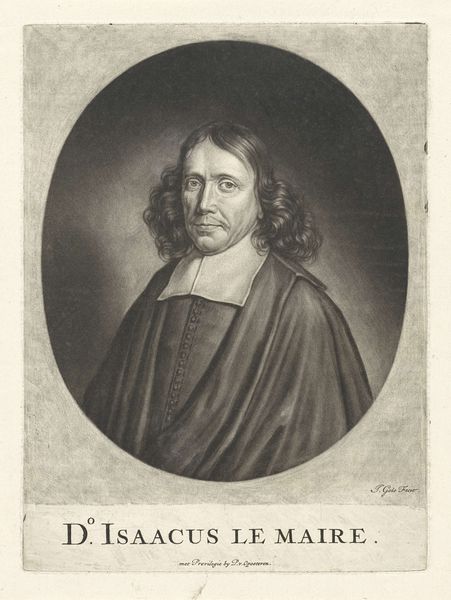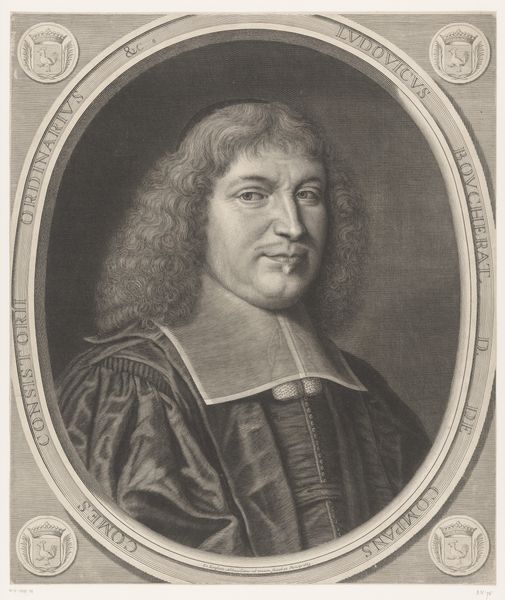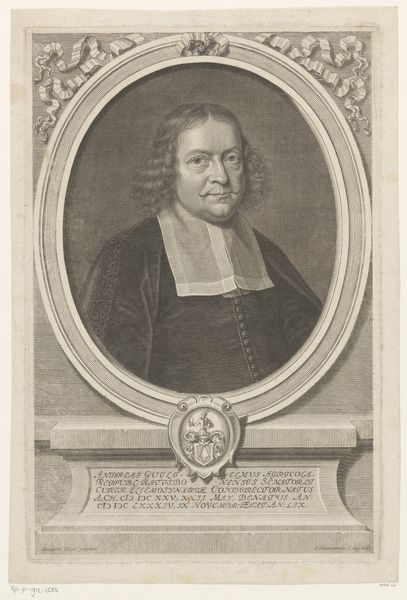
#
wedding photograph
#
photo restoration
#
portrait image
#
film poster
#
historical photography
#
portrait reference
#
old-timey
#
framed image
#
yellow element
#
19th century
Dimensions: height 257 mm, width 194 mm
Copyright: Rijks Museum: Open Domain
Curator: Here we have Wallerant Vaillant's "Portret van de predikant Laurentius Homma," made in 1673. It's currently held at the Rijksmuseum. Editor: Immediately, there's this...weightiness, isn't there? The way the dark cloak seems to anchor him, and the oval frame itself feels so self-contained. It has the feel of a study in contrasts, light skin and dark fabrics and the like. Curator: Vaillant masterfully uses the mezzotint technique. Notice how he manipulates the burr to achieve such tonal gradations, transitioning from deep blacks to luminous highlights, particularly on Homma’s face and collar. The play of light enhances the texture of the fabrics. Editor: It almost glows, doesn't it? That collar—stark white, perfectly framing his face—seems almost otherworldly. And his gaze is so direct; it’s quite powerful. Like he's seeing straight through you. Curator: Indeed, the direct gaze is a compositional element common in portraiture meant to convey authority and presence. However, note that the subtle asymmetry introduces dynamism. His head is ever-so-slightly turned. Editor: Right, so that there is, I think, also an almost endearing soft humanity in the picture, which creates, in turn, tension in the scene because, at first glance, he presents very strong indeed. Like, I look at this picture and I feel like he's staring into my soul, yet maybe he's wondering if he locked the door behind him. You know? Curator: That observation speaks to the ambiguity inherent in portraiture of the era. The visual language suggests authority and solemnity, attributes fitting for a clergyman. Yet, there are those minute, humanizing elements. Editor: It is striking, really—how such old artworks are so simple in one sense, so clear in terms of lines and subjects, and yet so layered and confusing on the emotional level. Maybe this has the same function that a mirror would've had back then, and hopefully it can offer us something to contemplate in our world, too. Curator: A most astute thought, blending formal reading and felt intuition. Editor: Yeah? It just...seemed right, like what needed to be said!
Comments
No comments
Be the first to comment and join the conversation on the ultimate creative platform.
